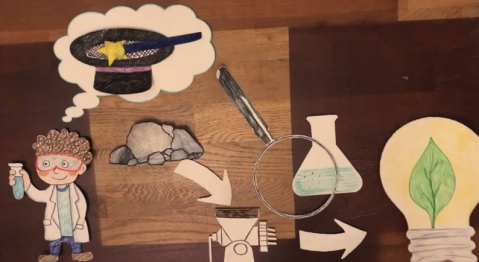M2.10 | Preparation and testing of thermoelectric materials
Funding period: Feb 2017 to Apr 2021
Researcher: Christian Künzel
Wrap-up
Keywords: printing, doctor blading, thermoelectric, power factor, waste heat recovery
Background:
Through the possibility of printing thermoelectric (TE) materials, the specific applications in the field of waste heat recovery can be expanded. A major challenge here is the production of printed TE legs with low thermal conductivity (κ) and a simultaneously high power factor.
Objective:
Development of a printing process for self-supporting chalcogenide layers as well as the increase of the thermoelectric transport properties.
Methods:
Use of the doctor blading printing technique as a basis with a self-developed colloid disperse printing ink through a wet grinding process by using an organic solvents and a final sintering step for compaction.
Results:
TE legs were printed as microlayers (50 x 50 x 0.13 mm3) based on a colloidal ink (made of Sb2Te3). A power factor up to 2097 µW/mK2 was determined by 4-point and Seebeck voltage measurements. Hot-disk measurements show a drastic reduction of κlayer = 0.05 W/mK (by implementing phonon scattering mechanism) compared to the κbulk as well as the predictions from our own DFT simulations. Rietveld analyses prove Sb2O3 contents, which can be directly attributed to the organic solvent in the printing ink and could be qualitatively confirmed as crystalline inclusions by EDS as well as SEM measurement. TEM images also show encapsulation of the formed nanostructures.
Conclusions:
Considering other recent printing techniques in thermoelectrics, doctor blading showed a power factor increase of up to 65 % compared to screen printing and up to a 17 times power factor increase compared to dispenser printing.
Originality:
The research results enable a new approach to the implementation of thermoelectric generators based on printed materials for waste heat recovery.



